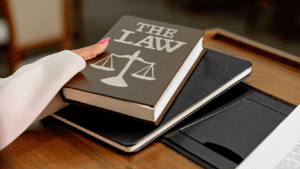Law governs every aspect of human society, from contracts to criminal justice, but where does it come from? The answer lies in the sources of law in jurisprudence, a concept that explains the origins and foundations of legal rules. Whether you’re a law student, a curious reader, or someone interested in how societies function, understanding these sources offers a window into the structure of justice and order.
In this detailed guide, we’ll explore the primary sources of law—legislation, precedent, custom, constitutional law, and international law—as well as secondary sources like legal writings and equity. We’ll dive into their definitions, historical roots, roles in modern legal systems, and their significance in shaping jurisprudence. By the end, you’ll have a thorough understanding of how laws are born and why they matter. Let’s get started!
What Are Sources of Law in Jurisprudence?
In jurisprudence—the study of law and legal theory—the “sources of law” refer to the origins from which legal rules and principles are derived. These sources provide the authority and legitimacy for laws, answering the question: Why is this rule binding? They vary across legal systems, reflecting cultural, historical, and political differences, yet they share a common purpose: to regulate behavior and resolve disputes.
Jurisprudence classifies sources into two broad categories:
- Primary Sources: Formal, binding origins of law (e.g., statutes, precedents, customs).
- Secondary Sources: Informal, persuasive materials that interpret or influence law (e.g., legal writings, scholarly opinions).
Understanding these sources is key to grasping how legal systems function, from common law countries like the United States to civil law nations like France. Let’s break them down one by one.
Primary Sources of Law in Jurisprudence
1. Legislation: The Written Word of Law
What Is Legislation?
Legislation, often called statutory law, is the most authoritative source of law in modern legal systems. It consists of written rules enacted by a legislative body—such as a parliament, congress, or assembly—granted the power to create laws. Think of acts, statutes, or codes that dictate everything from traffic rules to tax obligations.
Historical Roots
Legislation emerged as societies grew complex, requiring uniform rules to replace informal customs. Ancient examples include the Roman Twelve Tables (circa 450 BCE) and Hammurabi’s Code (circa 1750 BCE). The rise of nation-states in the Middle Ages further solidified legislation as a cornerstone of governance.
Key Features
- Authority: Derived from a sovereign body (e.g., government).
- Clarity: Written and codified for accessibility.
- Supremacy: Overrides conflicting customs or precedents in most systems.
Role in Jurisprudence
Legislation reflects the will of the people (in democracies) or the state (in autocracies). It’s dynamic, adapting to societal changes—think of laws addressing cybercrime or environmental protection.
Examples
- The U.S. Constitution and federal statutes.
- The Indian Penal Code (1860).
- The UK’s Human Rights Act (1998).
Strengths and Weaknesses
- Strengths: Precise, uniform, and adaptable.
- Weaknesses: Can be rigid or slow to change; may not address every situation.
2. Precedent: Law from Judicial Decisions
What Is Precedent?
Precedent, or case law, arises from judicial rulings in court cases. Under the doctrine of stare decisis (“to stand by things decided”), courts follow earlier decisions to ensure consistency. This source is central to common law systems like those in England, the U.S., and Canada.
Historical Roots
Precedent evolved in medieval England, where judges began recording decisions to guide future cases. The system matured with the establishment of appellate courts, creating a hierarchy of binding rulings.
Key Features
- Binding Precedent: Lower courts must follow higher court decisions.
- Persuasive Precedent: Non-binding rulings (e.g., from other jurisdictions) may influence judges.
- Flexibility: Evolves with new interpretations.
Role in Jurisprudence
Precedent fills gaps left by legislation, adapting law to real-world disputes. It embodies judicial reasoning and reflects societal values over time.
Examples
- Brown v. Board of Education (1954, U.S.) outlawing school segregation.
- Donoghue v. Stevenson (1932, UK) establishing negligence law.
Strengths and Weaknesses
- Strengths: Flexible and responsive to unique cases.
- Weaknesses: Can lead to inconsistency if precedents conflict; relies on judicial interpretation.
3. Custom: Law from Tradition
What Is Custom?
Custom refers to long-standing practices or traditions accepted as legally binding within a community. It’s one of the oldest sources of law, predating written statutes and courts.
Historical Roots
In ancient societies—like tribal communities or early Rome—custom governed behavior before formal laws existed. Over time, customs were codified or displaced by legislation, but they remain relevant in some contexts.
Key Features
- Longevity: Must be practiced consistently over time.
- Acceptance: Recognized as binding by the community.
- Reasonableness: Must align with modern values to be enforceable.
Role in Jurisprudence
Customs shape law where statutes or precedents are silent. In jurisprudence, they highlight law’s connection to culture and history.
Examples
- Hindu personal laws in India (e.g., marriage customs).
- English common law principles rooted in medieval customs.
Strengths and Weaknesses
- Strengths: Reflects community values; flexible in informal settings.
- Weaknesses: Vague, outdated, or unenforceable without codification.
4. Constitutional Law: The Supreme Framework
What Is Constitutional Law?
Constitutional law derives from a nation’s constitution—the foundational document outlining government powers and citizens’ rights. It’s the highest source of law in most systems, overriding other laws if they conflict.
Historical Roots
Modern constitutionalism began with documents like the Magna Carta (1215) and the U.S. Constitution (1787), establishing limits on authority and protections for individuals.
Key Features
- Supremacy: Overrides all other laws.
- Entrenchment: Difficult to amend, ensuring stability.
- Broad Scope: Covers rights, governance, and legal principles.
Role in Jurisprudence
Constitutions provide the legal backbone for a nation, influencing every branch of law. They embody a society’s core values and aspirations.
Examples
- The U.S. Constitution’s Bill of Rights.
- India’s Constitution (1950), one of the longest in the world.
Strengths and Weaknesses
- Strengths: Ensures stability and protects rights.
- Weaknesses: Can be rigid; interpretation disputes arise (e.g., U.S. Second Amendment debates).
5. International Law: Law Beyond Borders
What Is International Law?
International law governs relations between states, organizations, and individuals across borders. Its sources include treaties, conventions, and customary international practices.
Historical Roots
Emerging from the Peace of Westphalia (1648), international law grew with globalization, addressing war, trade, and human rights.
Key Features
- Treaties: Binding agreements (e.g., Geneva Conventions).
- Custom: Global practices (e.g., diplomatic immunity).
- Organizations: Rules from bodies like the United Nations.
Role in Jurisprudence
It influences domestic law, especially in areas like human rights or trade, and reflects a global legal order.
Examples
- The Universal Declaration of Human Rights (1948).
- The Paris Climate Agreement (2015).
Strengths and Weaknesses
- Strengths: Promotes cooperation and global standards.
- Weaknesses: Enforcement is weak; relies on state consent.
Secondary Sources of Law in Jurisprudence
1. Legal Writings and Juristic Opinions
What Are Legal Writings?
Legal writings—textbooks, articles, and commentaries by jurists—aren’t binding but offer persuasive insights. Think of works by scholars like Blackstone or Hans Kelsen.
Role in Jurisprudence
They interpret primary sources, guide judges, and shape legal education. Courts may cite them in landmark rulings.
Examples
- Blackstone’s Commentaries on the Laws of England (1765–1769).
- Salmond’s Jurisprudence.
Strengths and Weaknesses
- Strengths: Clarifies complex laws; inspires reform.
- Weaknesses: Lacks binding force; subjective.
2. Equity: Fairness in Law
What Is Equity?
Equity supplements strict legal rules with principles of fairness. It emerged in England when common law remedies were inadequate.
Historical Roots
The Court of Chancery (14th century) developed equity to address rigidities, introducing remedies like injunctions.
Role in Jurisprudence
Equity softens law’s harsh edges, ensuring justice aligns with morality.
Examples
- Trust law in common law systems.
- Injunctions to prevent harm.
Strengths and Weaknesses
- Strengths: Flexible and just.
- Weaknesses: Can be unpredictable; less prevalent in civil law systems.
Comparing Sources of Law in Jurisprudence
| Source | Nature | Authority | Strength | Weakness |
|---|---|---|---|---|
| Legislation | Formal/Written | Supreme | Clear and adaptable | Rigid, slow to change |
| Precedent | Judicial | Binding/Persuasive | Flexible, case-specific | Inconsistent at times |
| Custom | Traditional | Community-based | Culturally rooted | Vague, outdated |
| Constitutional Law | Foundational | Supreme | Stable, rights-focused | Rigid, interpretive |
| International Law | Global | Treaty/Custom-based | Promotes cooperation | Weak enforcement |
| Legal Writings | Scholarly | Persuasive | Insightful | Non-binding |
| Equity | Fairness-based | Supplemental | Just and flexible | Unpredictable |
Sources of Law in Different Legal Systems
Common Law Systems (e.g., UK, U.S.)
- Emphasize precedent and legislation.
- Equity and custom play historical roles.
Civil Law Systems (e.g., France, Germany)
- Prioritize legislation (codes) over precedent.
- Custom and judicial decisions are secondary.
Religious Law Systems (e.g., Islamic Law)
- Rely on sacred texts (e.g., Quran) and scholarly interpretations.
- Custom supplements religious rules.
Mixed Systems (e.g., India, South Africa)
- Blend legislation, precedent, custom, and religious law.
The Importance of Sources of Law in Jurisprudence
Why study these sources? They reveal how law evolves, adapts, and reflects society. They also highlight tensions—between tradition and progress, flexibility and stability, or national and global interests. For students and practitioners, understanding these origins is crucial to interpreting and applying laws effectively.
Contemporary Issues and Trends
- Technology: Cyberlaws emerge from legislation and international agreements.
- Human Rights: Constitutions and international law increasingly dominate.
- Globalization: International law influences domestic systems more than ever.
Conclusion
The sources of law in jurisprudence—legislation, precedent, custom, constitutional law, international law, legal writings, and equity—form the bedrock of legal systems worldwide. Each source contributes uniquely, balancing authority, tradition, and fairness to create a cohesive framework for justice.
Whether you’re fascinated by law’s historical roots or its modern applications, these sources offer endless avenues for exploration. What do you think shapes law most—written statutes or unwritten traditions? The interplay of these sources ensures law remains a living, breathing force in society.




